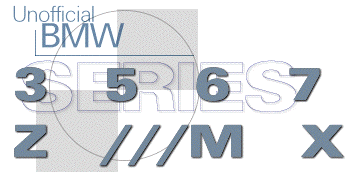|
Ron Stygar Carl Buckland Dale Beuning Forums Help
From: "Seth Thomas" <porsche993_at_mindspring.com> To: "Hunter Johnson" <HJOHNSON_at_dbmail.debis.de>, <e36m3-digest_at_Mailing-List.net> Subject: Re: [E36M3] E36 Brakes, Headlamps Date: Mon, 30 Aug 1999 12:06:40 -0400 Gang, I like what Hunter has said about the big brake upgrade but remember this. He is talking about a Porsche here. Yeah you could genalize some of it to apply to an M3 but not all of it. What about the upgrade to a BIg Brake Kit? On a Porsche, why would you want to upgrade. It is like Greg said in that the 928 uses the calipers of a 993 Twin Turbo. I cannot fathom why someone would want to upgrade but I know that people do. I have the Porsche kit on my car and I can tell you that the car feels well balanced during braking at the track and on the street. As for a 928 being similar in weight to our beloved M3's it might be but there are some major differences that can affect this braking balance. One of them is that the 928 is lighter in the rear than our M3's causing more of a need for a biasing kit. One thing that you have to remember about the M3 and the Porsche is that the M3 has a braking deficiency on the track and the Porsche does not. The M3 loves to cook the brakes after a couple of laps. Put on a brake kit and now your problems are fixed. There are plenty of people running one kind of brake kit or another on their cars, and most of them have never had a problem out of them. They also do not have the problem of cooking the rotors again. Do this if you want to see what the difference is: Take a pyrometer and measure the temps of the M3 brakes and that of one of the Big Brake Kits. If you are lazy then you can trust Neil Miller as he has already done this. His findings is the the stock brakes were somewhere in the mid to high 700 degree range and the M3 with the Porsche kit on the front was in the high 200 degree range. Now tell me which is bad for our cars. Now I also know that this does not mean everything as there are other examples we need to get a firm conclusion here. I do have them but I can tell you that the Porsche kit is the best engineered kit on the Market. The rotors, calipers and pads were all designed by Porsche, the company with the best brakes in the business. What else do you need to say about that!! Now we can benefit from this engineering on our cars thanks to Quido and Movit.
Seth Thomas From: Hunter Johnson <HJOHNSON_at_dbmail.debis.de> To: <e36m3-digest_at_Mailing-List.net> Sent: Monday, August 30, 1999 5:50 AM Subject: [E36M3] E36 Brakes, Headlamps Gang, Re brake postings recently, the Porsche Club of America's Panorama magazine has unusually excellent articles about preparing vehicles for the track, and over the past 6 months in particular there have been two articles which were very informative. I suggest that anyone interested in these contact the PCA to either get a membership or at least reprints of these articles. I'm sure I can't quote the article verbatim to the digest, but I think I could give you a few key points the author of the latest article, titled "Braking Systems, Technology and the Track". As someone on the digest pointed out about a year ago, Porsche brakes are perhaps the best production vehicle brakes on the planet (although the Brembos on Ferraris might be a very close second). However, given the weight of production cars, even Porsche brakes often fail in near-racing situations. As background, the author has experience putting his 928 on the track, which is comparable in weight to our M3s (at 3,400 lbs), so I think some of his comments might be worth noting.
An excellent example of why brake balance front to rear is key is Michael Schumacher's wreck at Silverstone. Pictures in German magazines clearly show that when his rear brakes failed, the front tires were locked and worn through the cords, while the rear tires were in perfect condition -- he didn't have rear brakes, and his car wouldn't stop. Clearly your M3 doesn't depend upon its rear brakes as much as Schumacher's Ferrari, and if you lose half your braking system you'll crash too, but the fact remains that you can't ignore front/rear brake balance after making brake modifications. Given that some have posted recently that they buy $100 sets of front rotors, it seems to me that replacing 6 sets of rotors every season is more cost effective (over 5 years) than buying a $3,000 big brake kit, which its extremely expensive rotors which will need to be replaced every two years anyhow. One of my acquaintances in Germany knows some insiders at BMW Motorsport, and one of my goals while I'm here is to come back to the US with the absolutely best braking system available for my M3/4. I'll let you know how I make out.
Hunter |

